|
I love the indigo hillsides of bluebonnet season, but its the sunrise fields that come after bluebonnet season, that I most adore. The reds, ambers, blacks, whites, greens, and wheat blonde flowers, both blooming and crunchy, ready to drop seed, are my favorites. We took a walk along one of our cities bayous to capture what is in my daughters time, and the spring season in Texas, ephemeral. Our quilts go with us, always.
2 Comments
The beautiful Memorial Park in Houston lends a bit of a natural respite to those of us living in the city. The 3 mile loop is great to run or walk, and when the temperatures drop here, that's one spot I run to. Infront of the golf course is a patch of maintained garden, the sort that rotates color every 2-3 months. I had been eyeballing a dense thicket of golden marigolds for weeks, thinking how I would never get my hands on that many marigolds again, or at least not this season. The following week my girlfriend and I walked passed them, and with December creeping in, I knew they'd be gone any day. The next morning I called the supervisor of the greens to explain my need for those marigolds (!), and told me they had been pulled out that morning at 6am! After speaking to the head gardener, she shared directions to a secret road that would lead me through the park, through the golf course, and to a dumpster, where all the marigolds were waiting, to make their way into the landfill. As I drove up, a beautiful orange and green mirage lay before me. I was giddy with excitement. I quickly went to work and began to cut all the flower heads off, tossing them in a bag. With one full trash bag, it was time to go home and get to work, and experiment with a flower I had never had a chance to work with first hand. DYEING WITH MARIGOLDS
-Fill a large pot at least half full with marigold flowers. Try not to include the stems. -Fill them to cover with water. Allow to sit overnight. -Next day, I used a hand blender to chop the flowers and help release the dye. -Bring the flowers slowly to boil, and allow them to simmer for one hour. -Strain into another pot. Now you have your marigold dye. Some people call this the 'dye liquor'. I used linen, cotton, silk and a small piece of wool to test fibers with the dye. The silk and linen were most successful. Prior to submerging the fibers into the dye pot, I had mordanted the linen and cotton with alum. I then simmered the fabric in the marigold dye for an hour. I then let it sit in the pot overnight. The following day I removed the items and placed them straight into my dryer. I allowed them to cure overnight, without rinsing. A gentle wash then properly rinsed them. The resulting colors are a warm yellow, with a hint of chartreuse. The charmeuse silk is divine, and like all silk, soaks up natural dye wonderfully. Linen is an absolute favorite fabric of mine to quilt with and I am glad to say the linen turned out beautifully, too. If you're ever eye balling a field of marigolds, don't hesitate to ask the land owner, or park conservancy for that matter, if you can have them! I’m laying on my bed, breastfeeding my daughter Yvonne Rose, who is a day old.
We lay beneath The Sky Quilt, a blanket I built while she was in utero, using for the first time, linen I hand dyed with indigo. The binding is made from an old tablecloth that belonged to her Great Grandparents, and on the back of the quilt, I included a spirit piece, cut from a vintage shirt her daddy bought while living in Germany. With the quilt draped over our bodies, I am looking at it for the first time, and begin to criticize the hand stitching that holds the quilt together. I machine piece all of my quilts, but the actual quilting is done by hand. Those three layers: the pieced quilt top, the cotton batting, and the backing, are pulled together with my imperfect little stitches, using a thick cotton thread from Japan called sashiko. These quilt stitches are so irregular! There is no symmetry between them! They are running at warp speed across the patchwork quilt top! They aren’t even kept in a straight line! What was I thinking?! How absurd in that moment, to critique my stitches after having just given birth. I am not a perfectionist, but those stitches are terrible! What came to the surface, once I asked the editor in my mind to hush, was the message of those hand stiches telling their story, one that is abstract and honest, and far more illustrative than my memories had allowed me to recollect. For the first time in a year it seemed, I could reflect. My hand quilted lines were like looking into a reflection pond. The stitches told the story of a mother working a full time corporate job and a part time job for a non-profit Waldorf school, of a mother tending to her pregnant vessel, and her 7 year old, and her husband…. of a mother determined to grow tomatoes with success this year, beneath the stifling blanket of a humid Texas summer, of a mother taking part in an art performance hand quilting live for an audience, of a mother trying to play her part as Maid of Honor in a wedding, of a mother so desperate to finish her baby’s quilt that she threw all concepts of zen and hand quilting meditation out of the window, just to get-it-done! In the beat of a moment, I could look back at the past year, my baby at my breast, and read the hectic rush that brought us to this beautiful, calm moment. What makes quilts the magical craft that it is, is the stories. Her quilt, covering us with warmth, is just the first chapter. These special blankets hold histories and stories told in pattern, color, materials, execution, and place. Talk to any person with a quilt, and they’ll tell you a story about it. It is one of the few objects we have in our lives where threads meander and wander along, to keep families connected, to keep spirits high, to keep bodies warm. So from that day forward, The Sky Quilt became a journal. It’s not a journal that writes itself, but a journal that is written in spirit. I’m mindful of the quilt as it travels with us, her piece of home that comes along. On her first trip to the beach, she laid on the quilt alongside her first Halloween pumpkin, picked up from a patch on the way there. The wind whipped over her little body and her legs floated above her waist. She was at the beach! An ocean full of sand lay beneath her, and she loved it. On the porch of our holiday cabin, we sun bathed in the winter sun at the foot of Dos Corazones mountains, she broke the wind with her quilt. I stood on my own quilt nearby, our morning ritual that week, stretching to the clear sky above and watching the light change on the landscape. After our annual New Year’s hike, her first one ever, we lay her on the back of the truck, the quilt beneath her, to give her body a rest from being carried. Above her, wise pine trees stand looking down. She looks up at them and smiles. On her first trip into a National Park, she laid on the quilt in a patch of blonde straw. Hawks circled above us. Her sister was calling to the skies saying “Guys! You can see the whole world from up here!” Nestled into the landscape, she lay safe, calm with the big world surrounding her. Yvonne won’t remember the view that day, when the layers of earth painted stripes of purple mountains in front of us, where the Santa Elena Canyon was the only formation that dropped down to the Earth, where we could see across Texas and off into Mexico for miles and miles. She won’t remember these times, but her quilt will. And I have grown to love those messy hand quilted stitches, a mark in time to remember the days before she arrived. It will take me a lifetime to put down into words and stitches what making quilts means to me. When I became a hand quilter, one of the first things I fell in love with was the ability to take my craft on the road with me, no matter where that road may lead.
Coming from a fine art background as a painter, video and collage artist, I was used to making my work in total isolation, at my desk, standing in my studio, or locked into a pair of headphones while editing video on the computer. While I took my watercolors on hikes a time or two, and painted the view before me, my abstract paintings are very focused meditations that require concentration and calm. Computer editing required electricity after many hours. Making collages meant making tight cuts and precise gluing. Quilting by hand meant I could quilt in the car, along the coast, while on vacation, beneath the sun, in my garden, on the side of a mountain, among the rocks, among the scrub, and any and every place I wish. It gives me a tremendous freedom I've never felt before. We spent last weekend camping down on the Texas Coast. What a weekend. We saw a moonrise and a sunrise within 24 hours, something I can't say I've seen in years. Just a quick overnight down on the coast really resets my clock. There is nothing like sleeping next to waves. The camping essentials for me are these:
-wholesome food - 15 changes of clothes for my daughter -firewood -warm/comfy bedding -a quilt to work on I started hand quilting during a road trip through the Rocky Mountains from Texas to Banff, Canada, and back. The thousands of miles we drove dissolved beneath the motion of my hand as I stitched mile after mile passing some of the most stunning scenery North America has to offer. My Rocky Mountain Quilt contains within its stitches the energy of all those mountain ranges, rivers, lakes, skies, animals, and people we met and saw along the way. I soon learned that while my painting style and hand quilted stitches were very similar in their meditative practice, the quilt was something I could take with me and work on moving through space. Or take with me and work on while relaxing at a park. As much as I love to paint it comes with a specific time and place. A time uninterrupted in my studio. Quilting is quite the opposite. As of late I have had the sewing machine down on the dining room table building my quilt tops as to be a part of the family dynamic while sewing. For painting, I must be tucked away and alone. I am so grateful for the art of hand quilting for this reason. To be unplugged, to be developing my craft anywhere in the world I choose, to work outdoors, to be creating my quilts in motion. 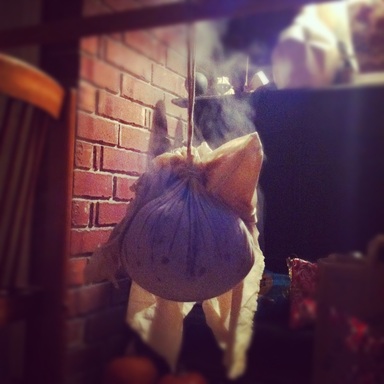 Our plum pudding, fresh from the boiling pot Our plum pudding, fresh from the boiling pot People often wonder if you can quilt with muslin. I think the amount of printed cotton quilt fabrics on the market cause quilters to question whether the bare basic unbleached muslin cotton used for a variety of other projects is suitable for quilting with. I say, yes! And I love working with it. I was first introduced to muslin as a child. Growing up in Australia, we adopted many traditions from England, one being the ritual of making the Christmas plum pudding each year. Centuries ago the pudding would be formed using skins made from animal intestines. With the arrival of muslin, this new pudding cloth was now reusable. Plum pudding time was just around the bend when it was time for my mother to visit the fabric store and purchase a meter of muslin. The muslin would first be boiled in a large pot of water. It's then floured and placed into a round colander or basin, ready to receive the pudding mix with all its glorious spices (Another tradition with the plum pudding is tossing old coins into the mixture. Us grandkids would vie to find a piece with the most coins as each coin found meant Nana and Papa would give us new money. No fears of breaking teeth, we wanted those coins!). Sometimes a two person job, the edges of the muslin are then gathered at the top and wrapped tightly with a piece of twine. A long loop is always left on the knot so that when you boil the pudding for hours in hot water, you can easily lift it up when the boiling time is finished. This also allows you to hang it from a broom stick between two chairs or some other hook, so the pudding can dry out a good solid month until Christmas. On Christmas Day, the pot is fired back up to boil the pudding, which is then carefully unwrapped and placed on a plate, topped with a sprig of holly and doused with brandy to be lit on fire. Served with creamy hot custard on the side, there is no flavor that says 'Christmas' to me than the taste of a plum pud! Muslin has a history of its own. It is reportedly from Mosul, Iraq, where European traders are said to have first encountered it. Ancient Greeks from the Indian port town Machilipatnam traded in muslin and Marco Polo described the cloth in his book The Travels in 1298. Used in medicine as gauze, in theater and photography productions, for a range of culinary uses and of course in dress making, muslin has become one of my favorite fabric choices to quilt with. Keeping with a natural and simplistic aesthetic in my quilt making, unbleached muslin keeps things simple. I love the flecks of natural grain seen in the unbleached kinds. It's as if the soul of the plant is still embedded in my materials. I've been using it a lot lately for crib quilts. With efforts to give our children natural products free of chemicals, the unbleached muslin is the answer. It harmonizes so beautifully with so many color palettes. And I'm not just using it on the backs of quilts. The warm ivory has become the minimal backdrop for the fronts of my quilts as well. Another reason to love muslin is its durability and ease in doing patchwork. Working with premium muslin in particular, the weave of the cotton stays put. There's little sliding around when piecing and I can depend on its strength. It's a wonderful anchor fabric when working with other loose weaves such as linen or delicate vintage fabrics.
As I embark upon learning to work with natural dyes, this is my fabric of choice. I love its durability and will in time love its malleability. How do you incorporate muslin into your quilt making? |
AuthorA place to share my quilting process, bits and pieces from parenting and home educating, and other discoveries. Join in the conversation and follow along on Instagram @campfirequilts Archives
December 2021
Categories
All
|
|
|
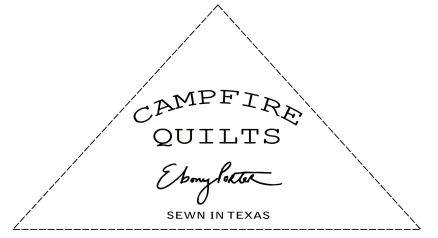
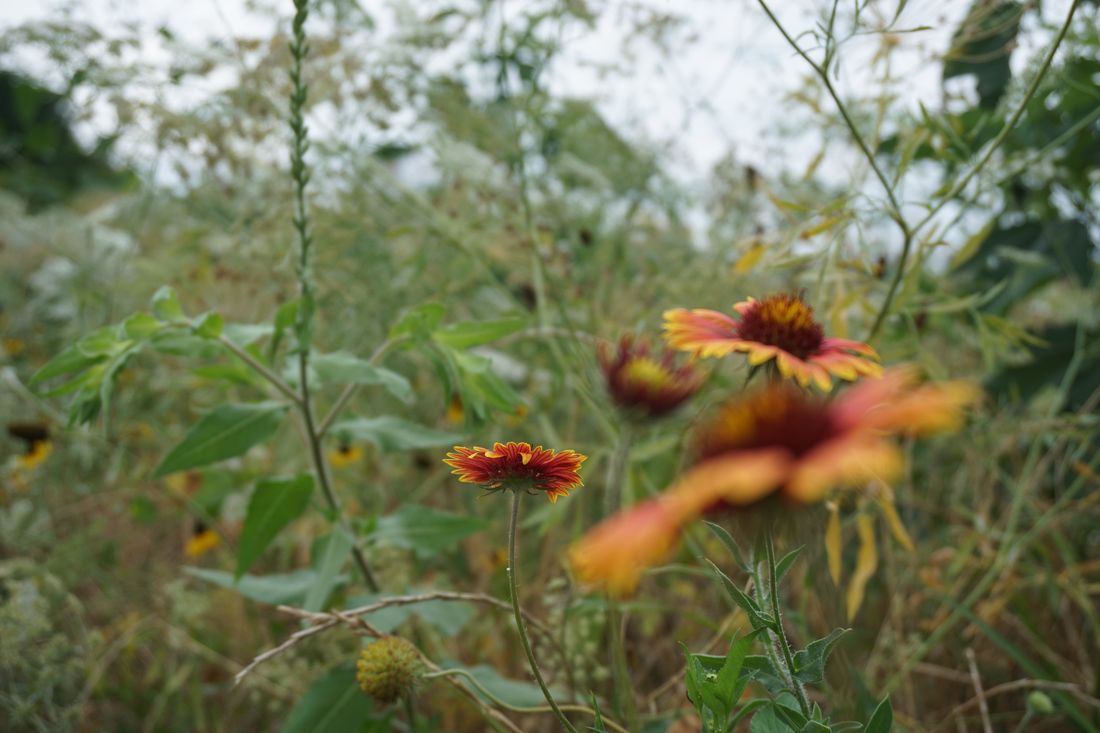
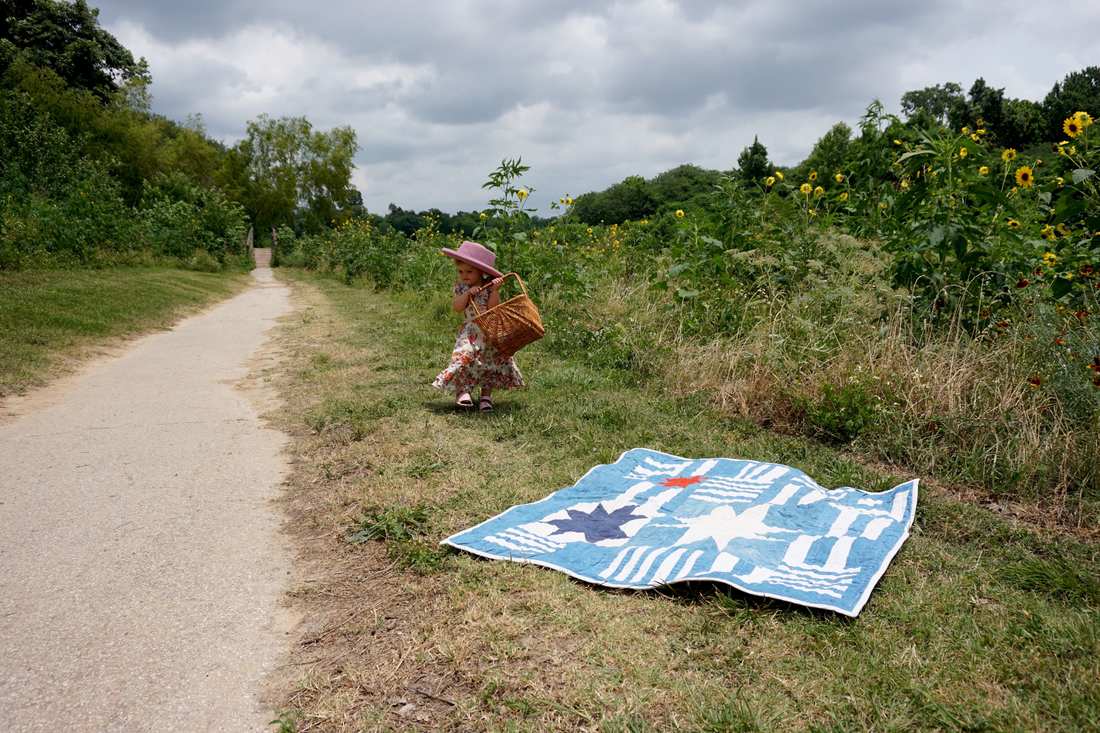
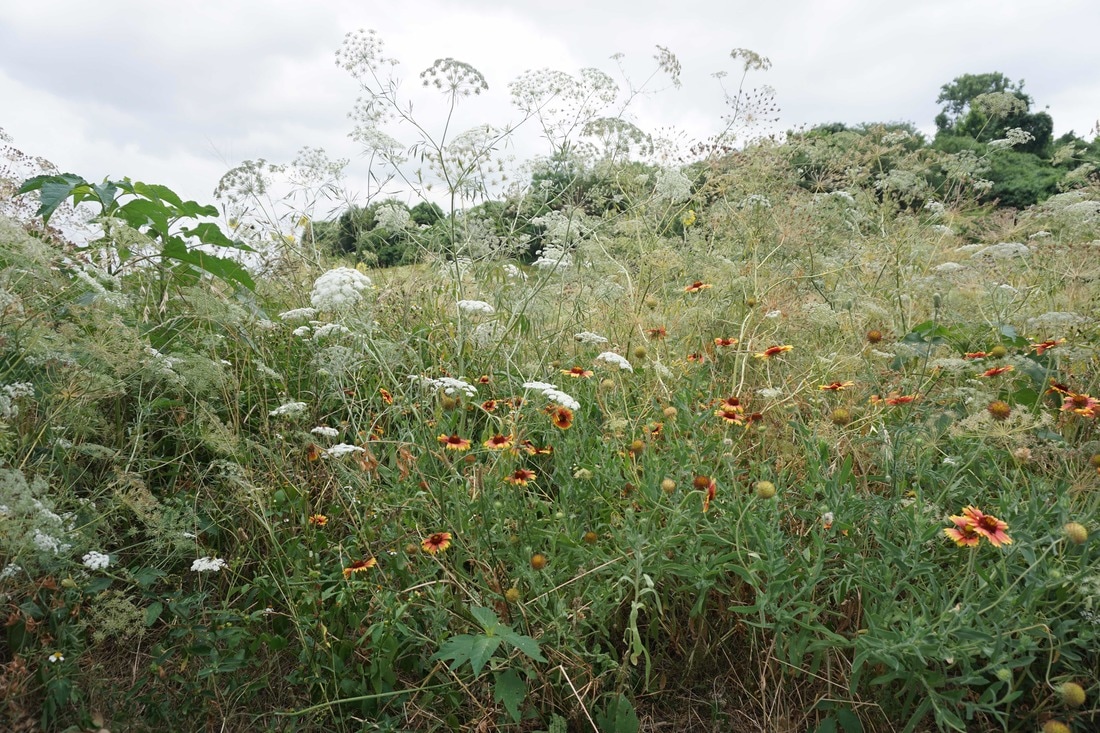
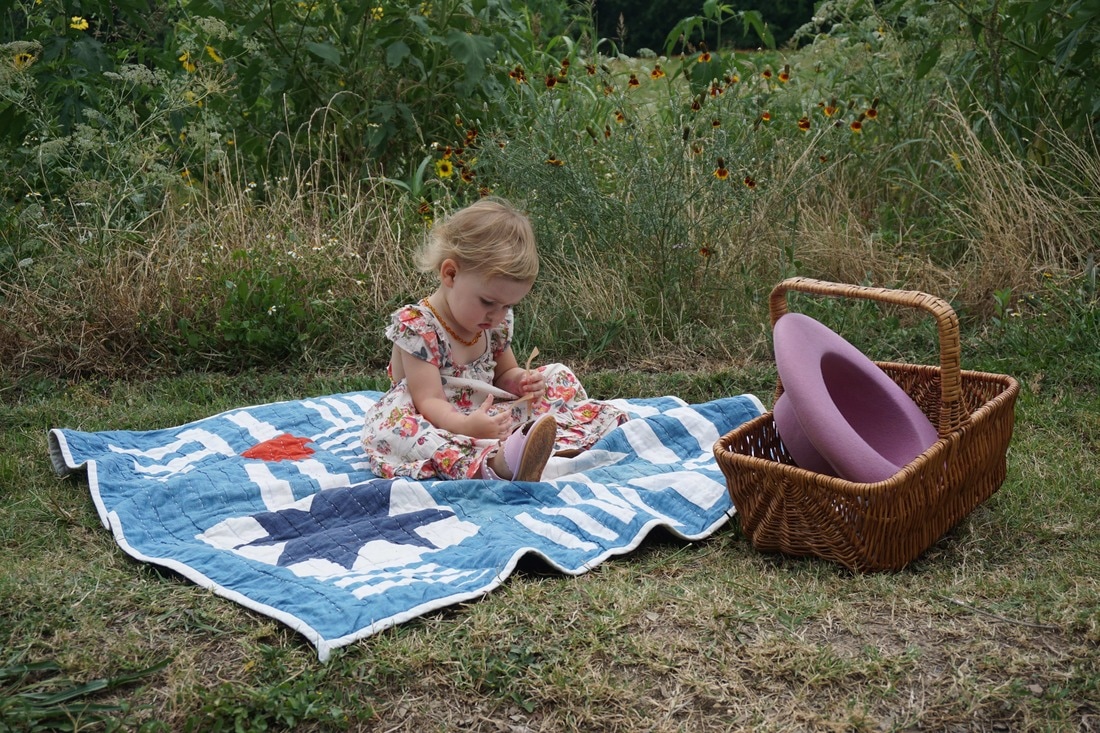
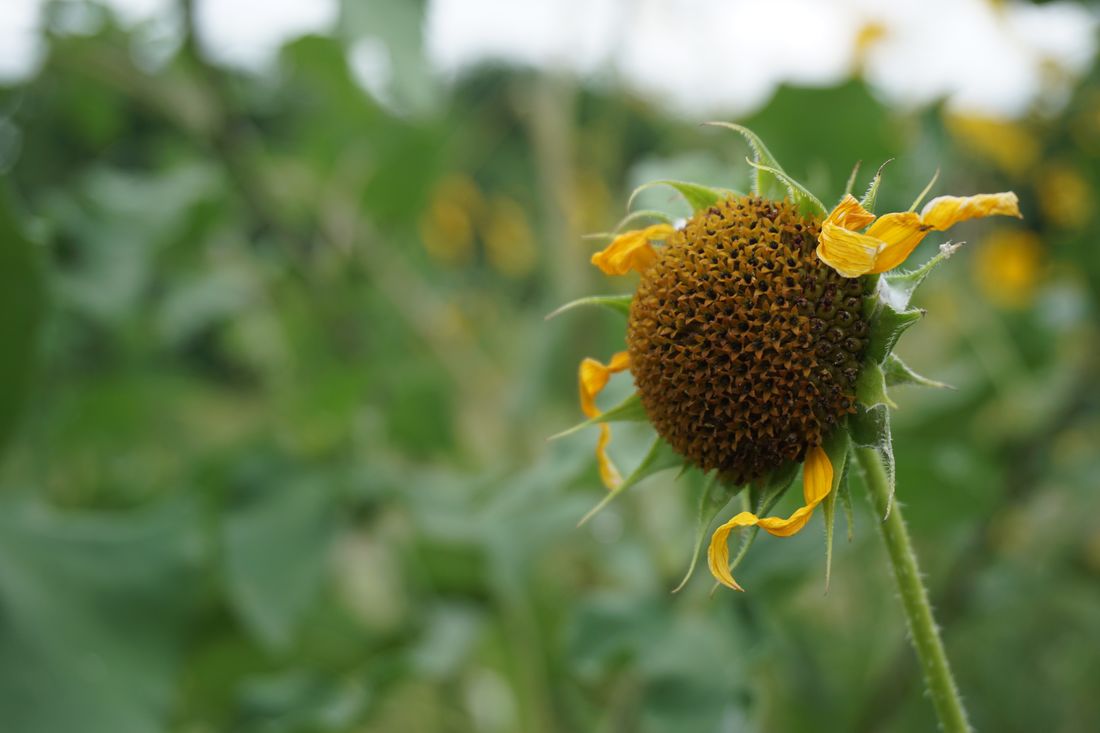
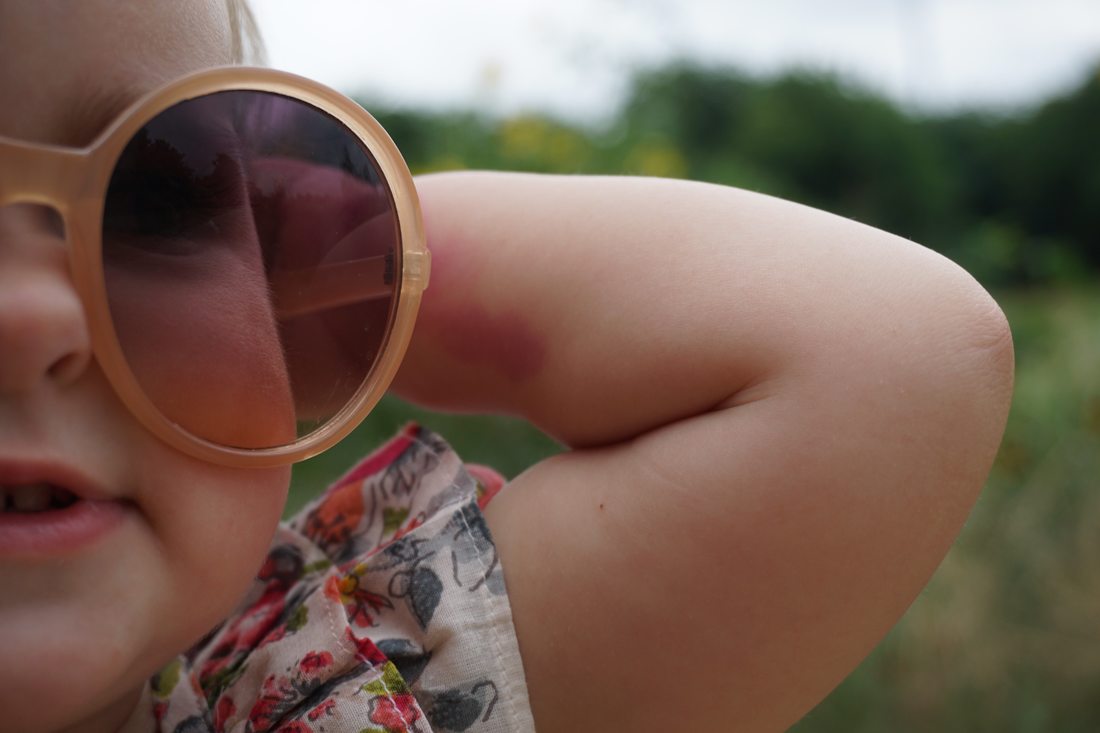
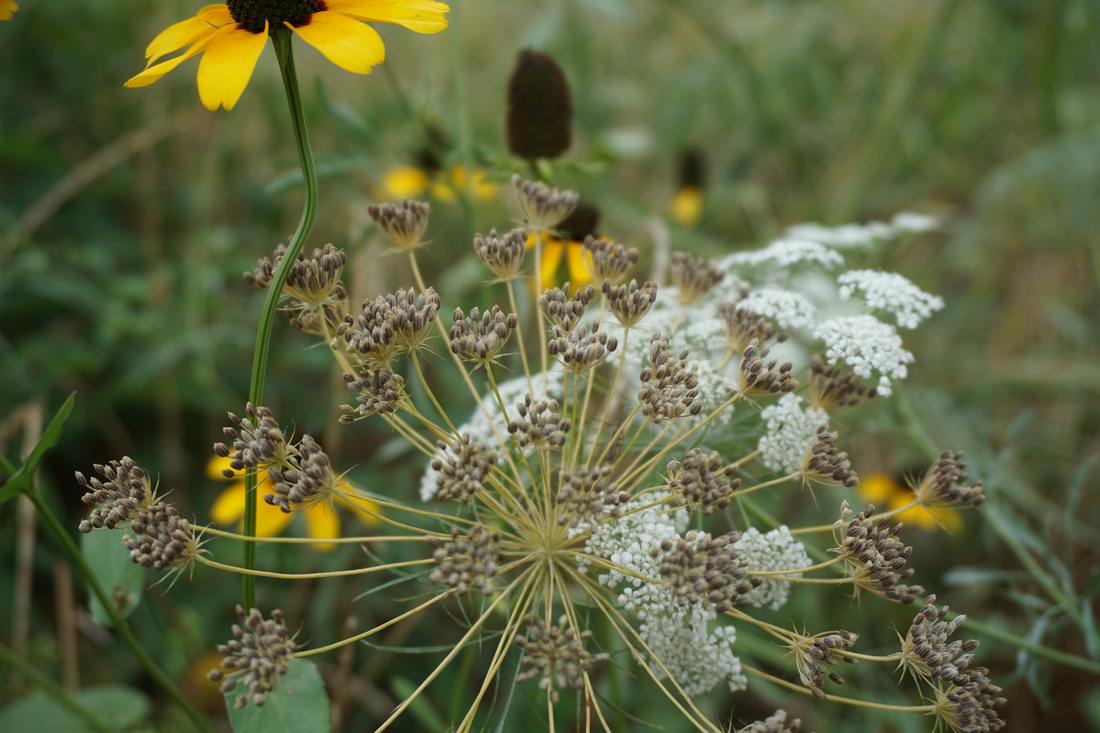
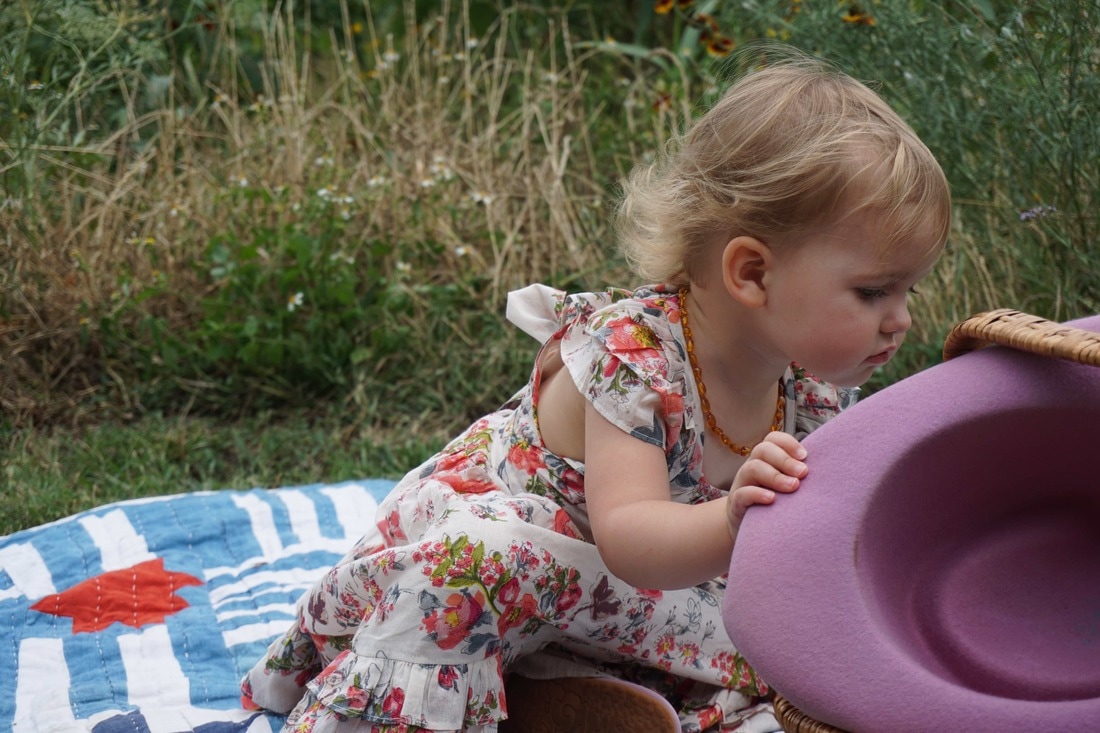
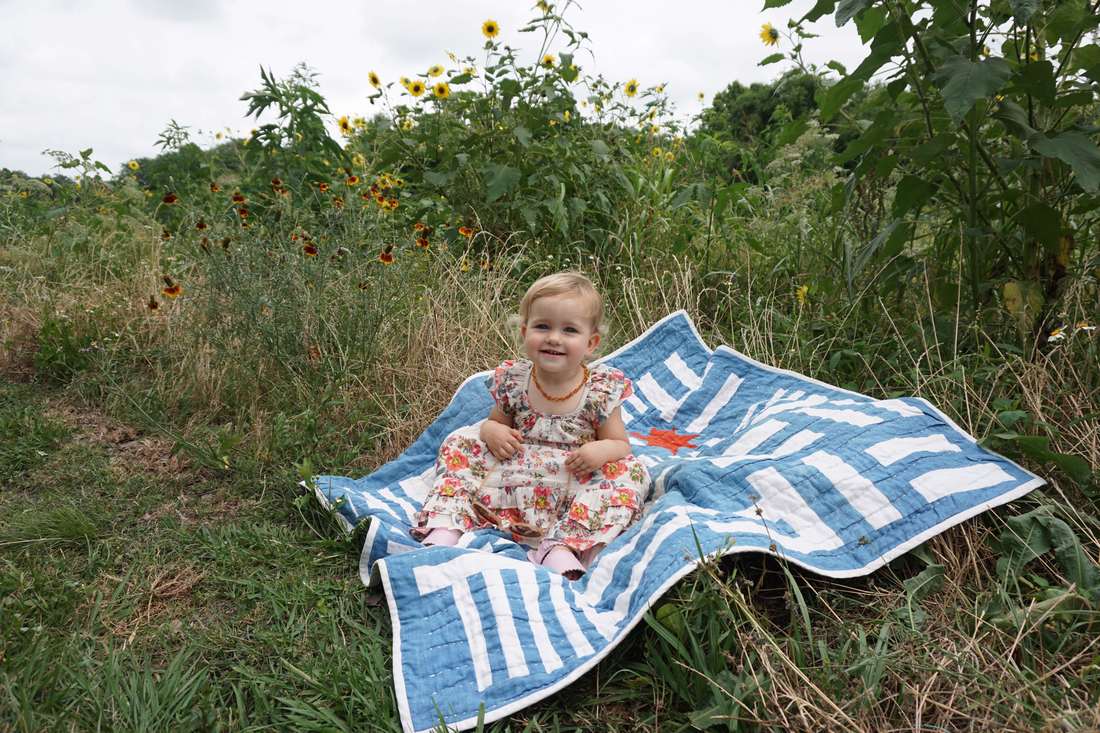
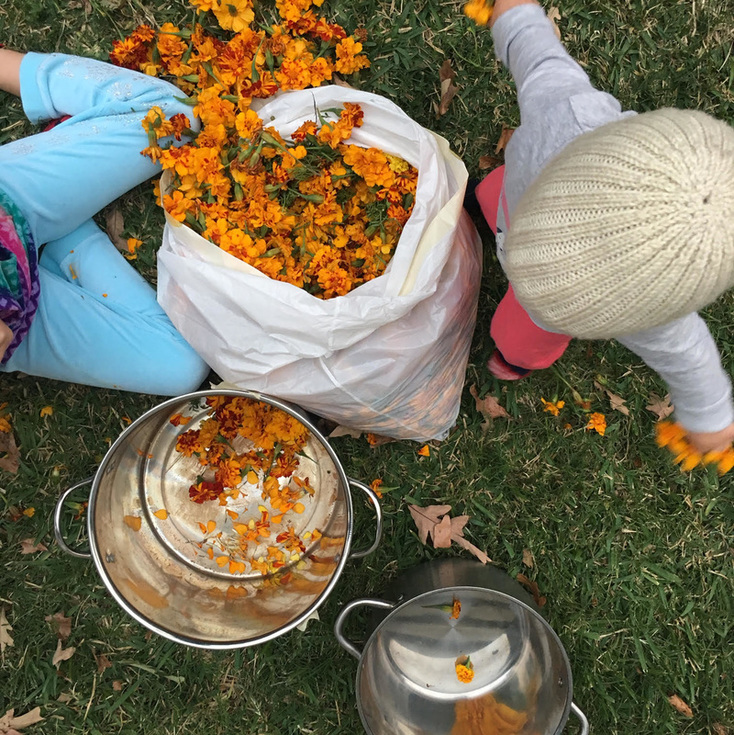
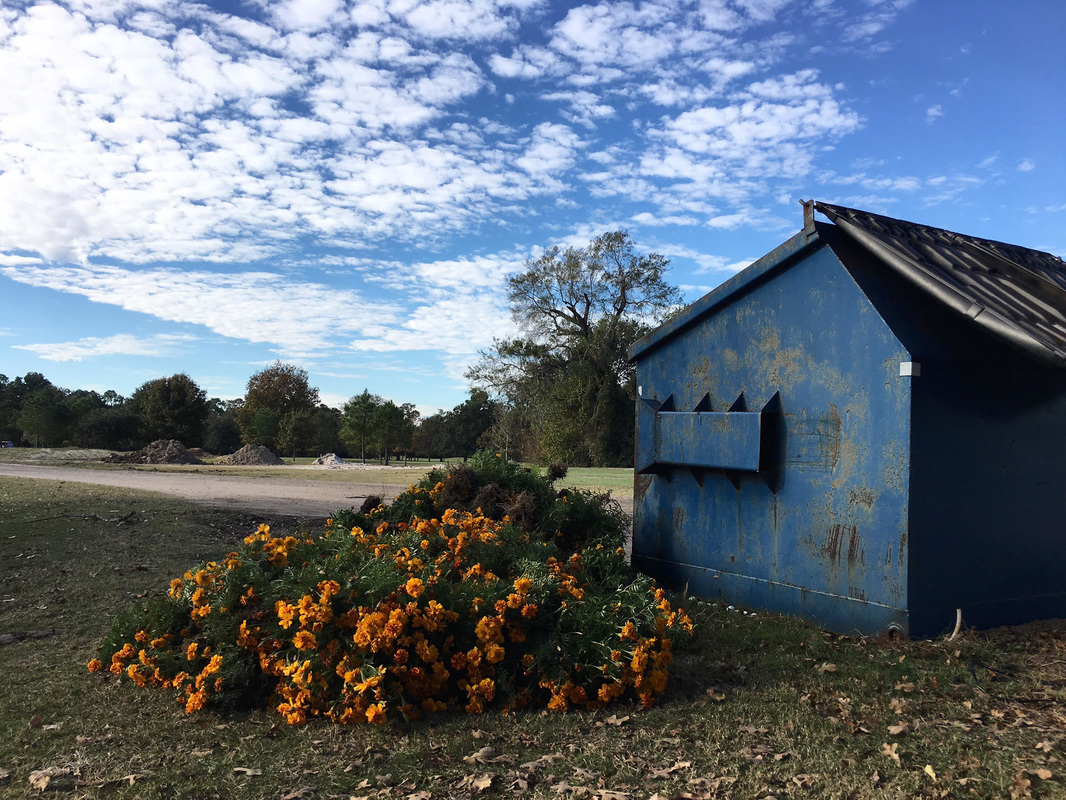
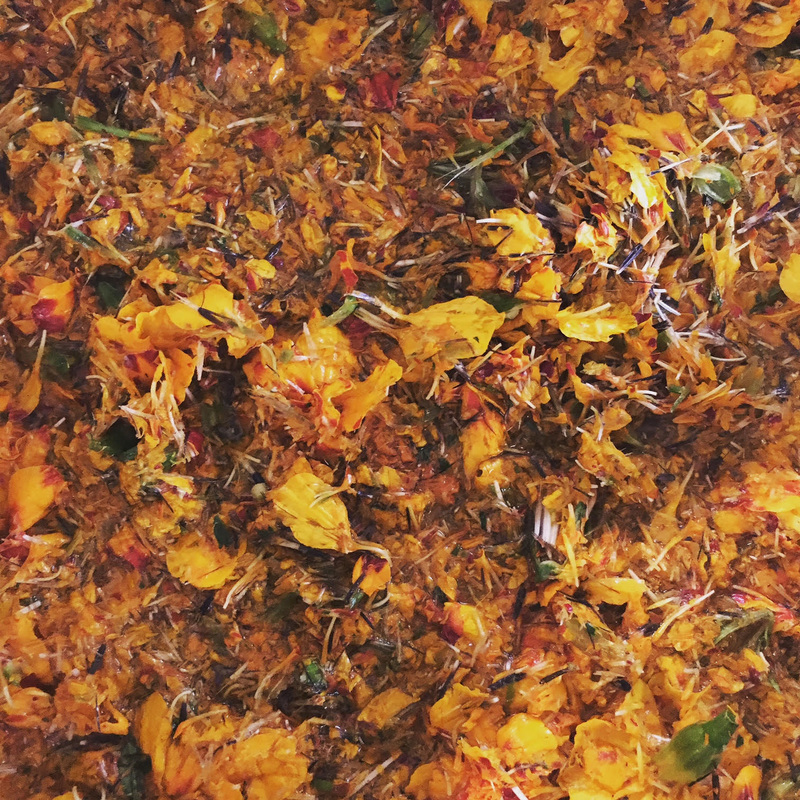
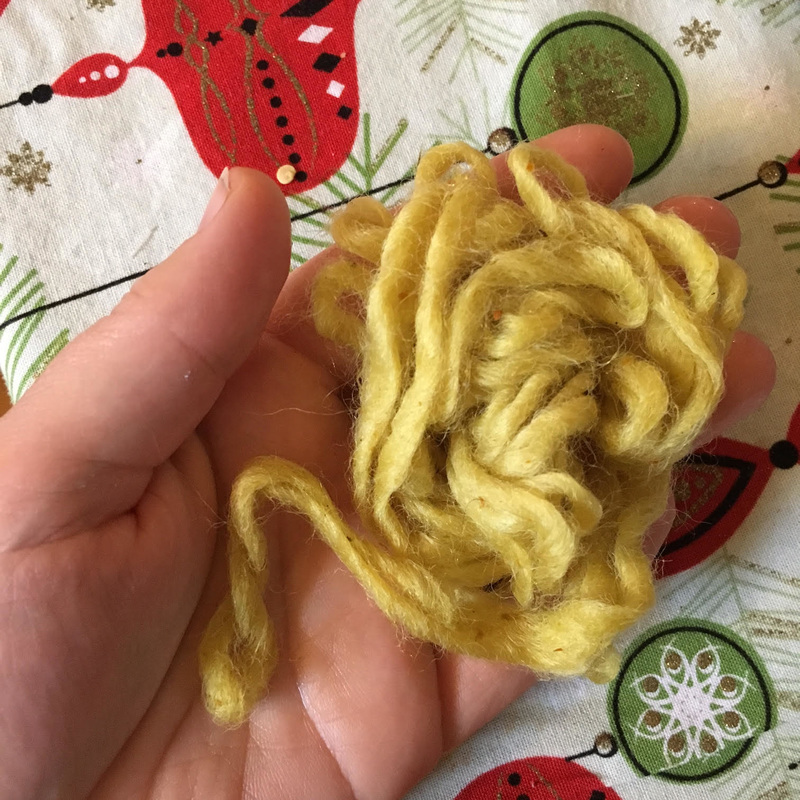
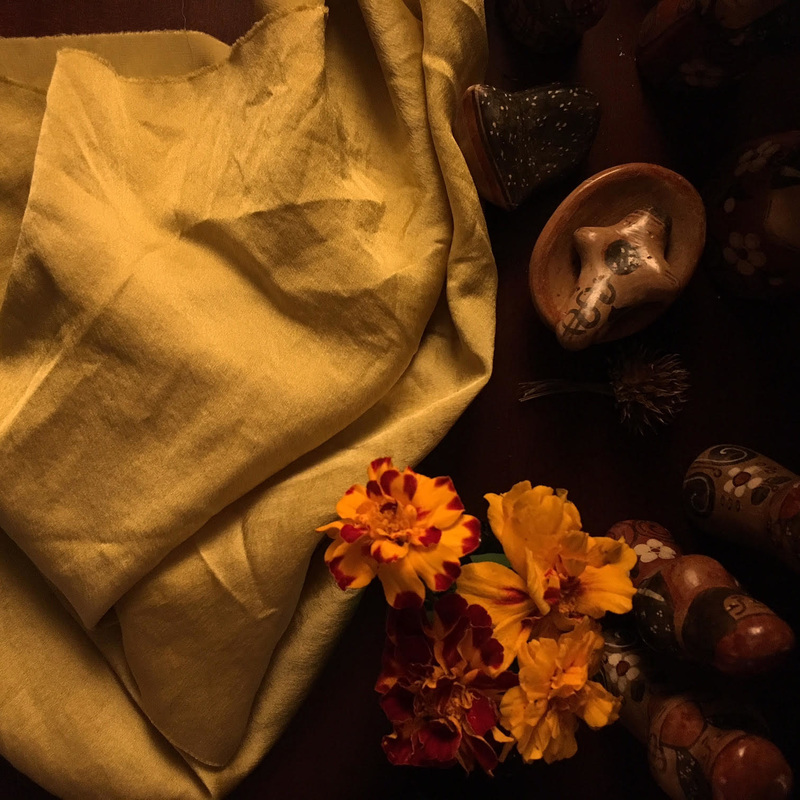
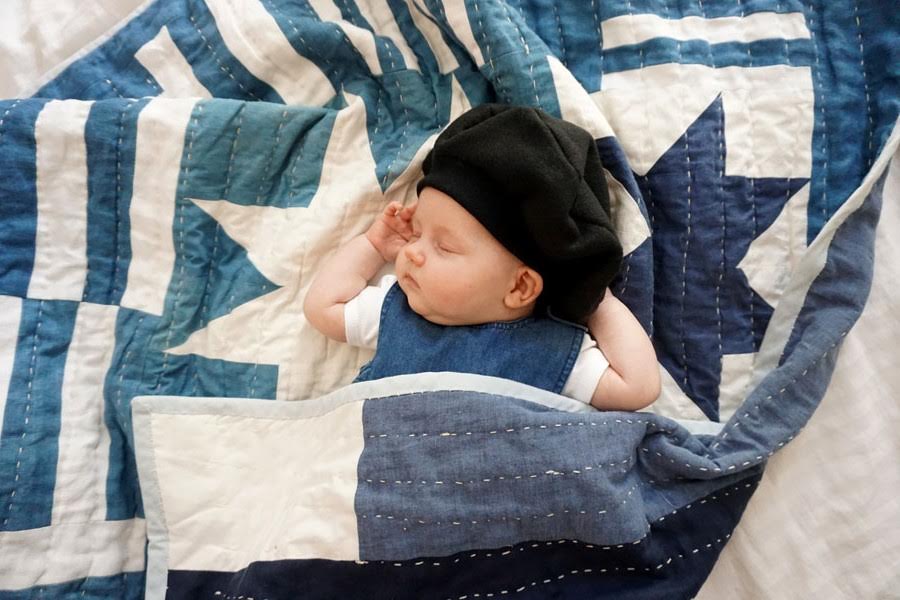
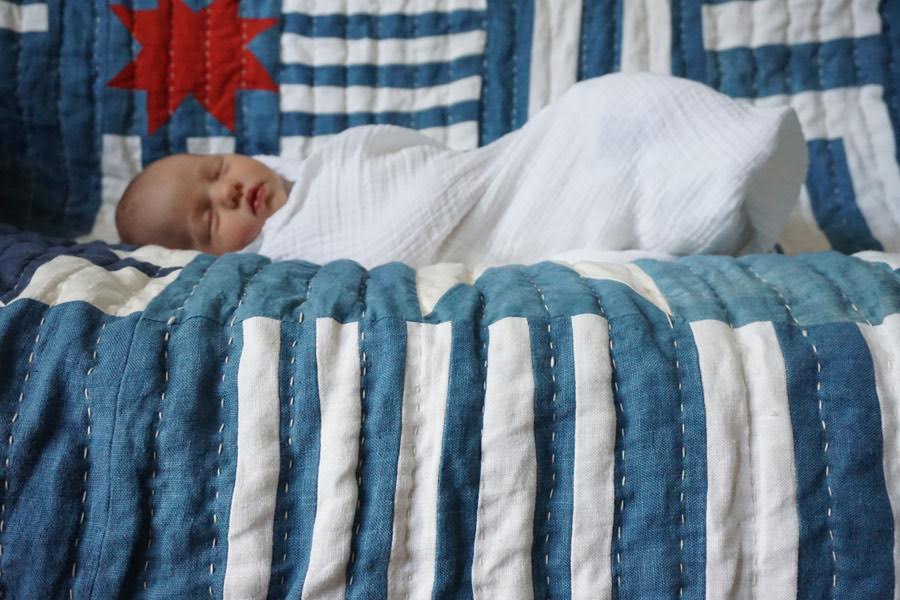
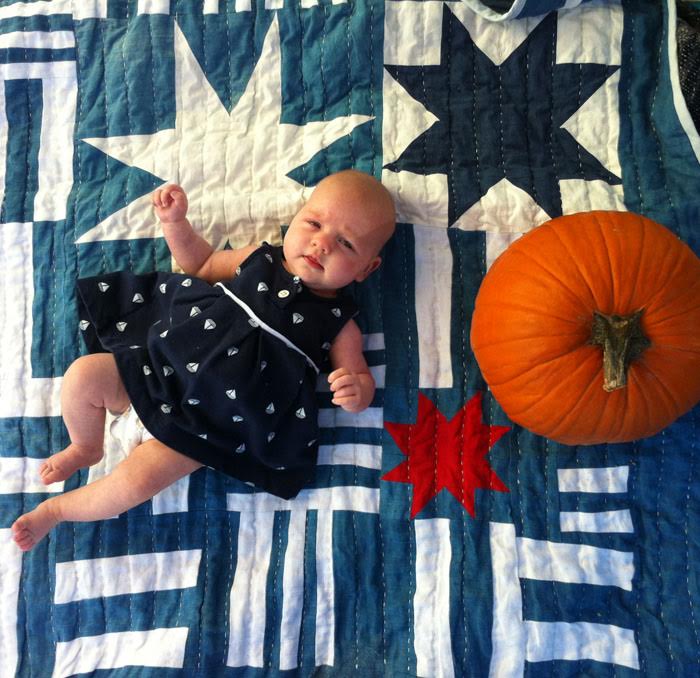
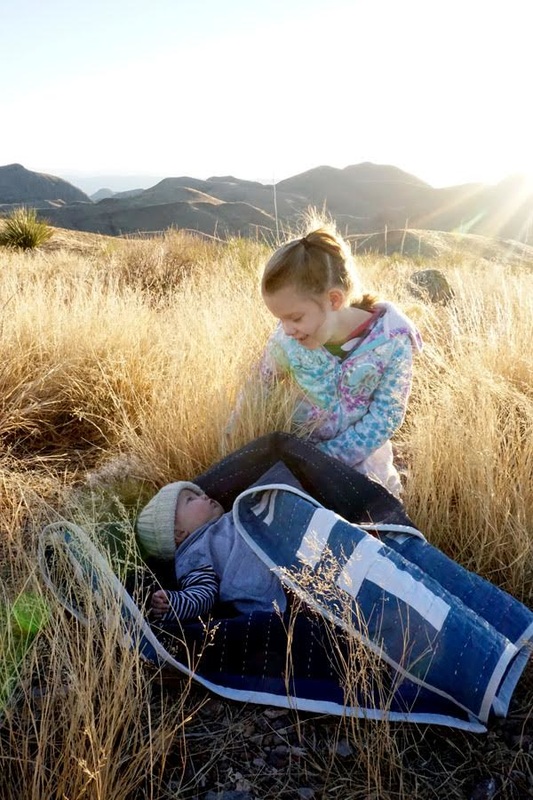
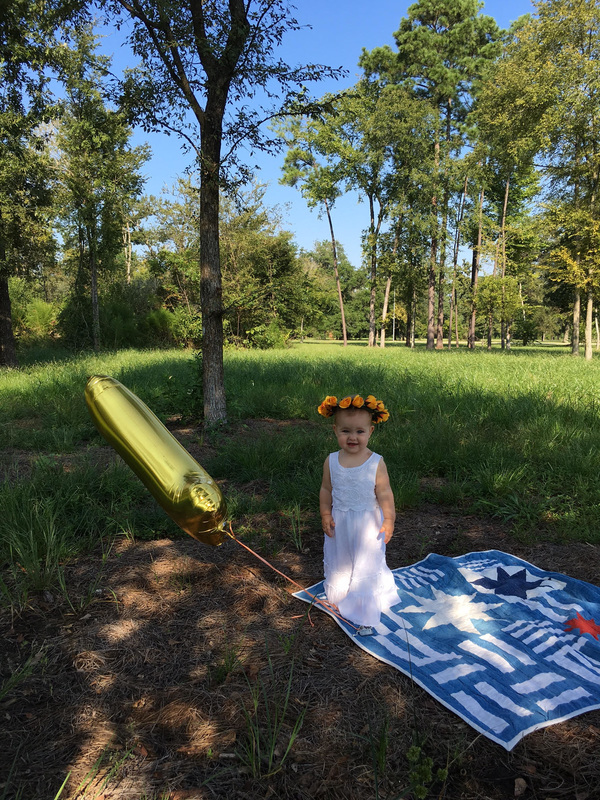
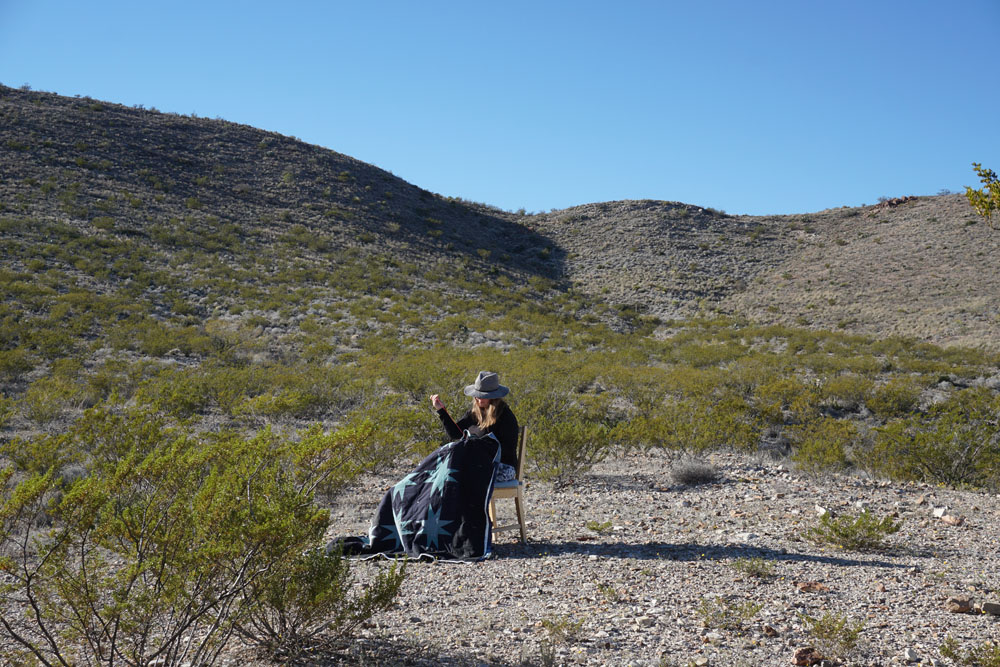
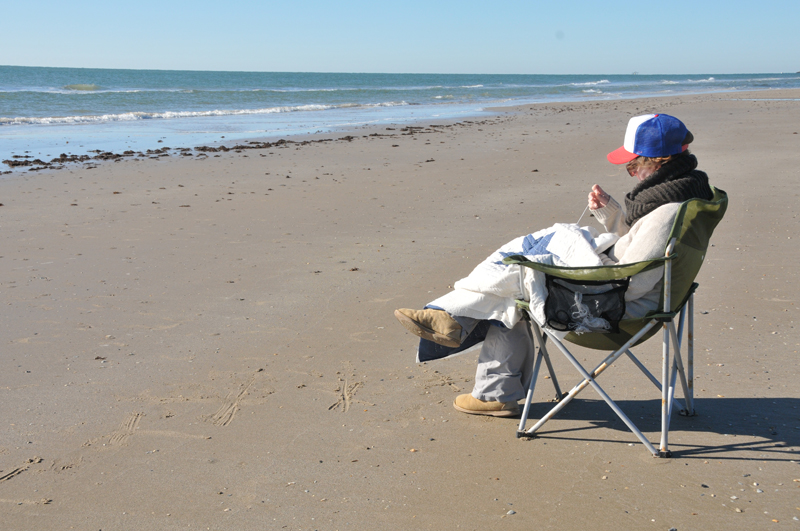
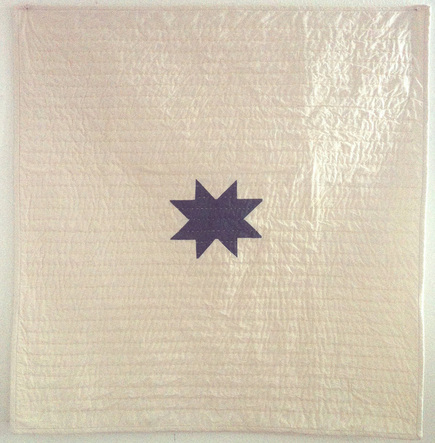
 RSS Feed
RSS Feed